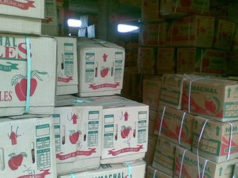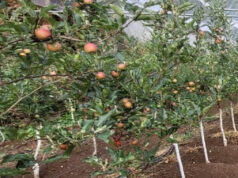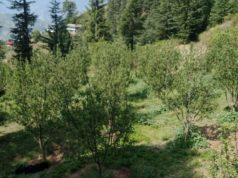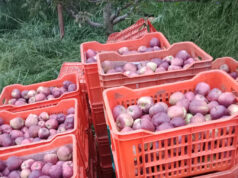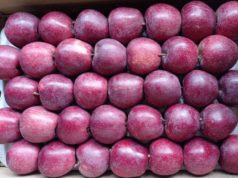In Himachal Pradesh, things are getting tough as a stubborn drought has been hanging around since December. This dry spell is not good news for the Apple business, which is a big deal here, worth a whopping Rs 6000 crore.
There’s a real worry about a massive 50 percent drop in Apple production. Usually, December to early January is when snowfall happens, and it’s crucial for keeping apple orchards healthy. Snow helps get rid of pesky insects and stops diseases from messing up the whole crop.
Dr. DP Sharma, a scientist from the Horticulture University Nauni, provides a nuanced insight into the ballet of nature and agriculture in Himachal Pradesh, stating, “The variable weather has different kinds of effects on the production of temperate fruits.” He outlines the vulnerabilities – the impact of fluctuating weather on fruit development, quality, and overall production. Changes in rainfall patterns and prolonged dry spells can severely impact water availability in Himachal Pradesh’s apple orchards, he notes, citing the rise in temperature as a catalyst for increased pest and disease incidences, setting the stage for early-season mite infestations.
This year, the dry conditions are causing a lot of problems for apple farmers. Raising new plantations, basin preparation, fertilizer applications and winter pruning of both young and old plantations have all been hit hard. The collateral damage extends beyond the orchards in Himachal Pradesh, reaching governmental and private nurseries, and proving to be a daunting challenge for newcomers seeking to enter the sector.
In the symphony of concern, experts emphasize the paramount importance of snowfall in Himachal Pradesh – the missing note that threatens to destabilize the delicate equilibrium of the apple economy. The absence of this crucial winter phenomenon elevates the risk of diseases spreading like wildfire, thrusting the entire Himachal Pradesh apple industry into a precarious position.
Chilling hours, the silent maestros of apple cultivation in Himachal Pradesh, initiated when temperatures drop below 7 degrees, now find themselves in jeopardy. Each apple variety, with its unique requirements, demands a specific duration of chilling hours. A normal crop typically thrives on 1000 to 1600 chilling hours, while stone fruits find solace in 300 to 500 chilling hours. Failure to meet these requirements sets the stage for a discordant symphony of abnormal flowering, a dissonance that could inflict substantial damage and compound the economic challenges faced by farmers in Himachal Pradesh.
In response to this natural crisis, scientists suggest soil conservation measures. Fruit growers are advised to embrace protective measures, applying light irrigation in the evening hours to shield young apple plants and nurseries from frost. Ingenious solutions, such as covering plants with gunny bags or straw, are suggested to mitigate the impact of frost. And farmers should not mess with the soil too much by digging or weeding to keep the moisture in. They’re also suggesting using dry grass or special sheets around the trees to keep things moist and stop weeds. When farmers cut or prune the branches, they should put something on the cut ends to keep away fungus. And, it’s best to put on fertilizer when the soil is nice and wet for it to work well.



